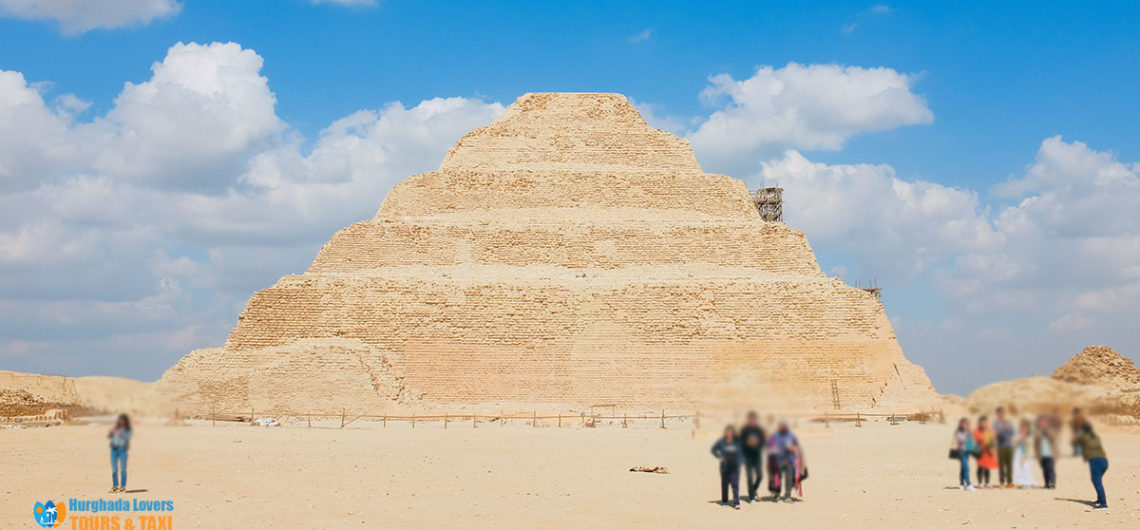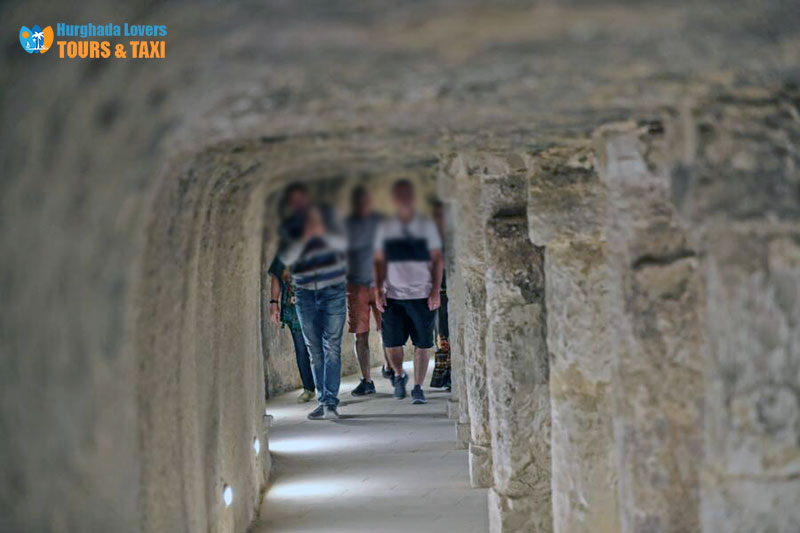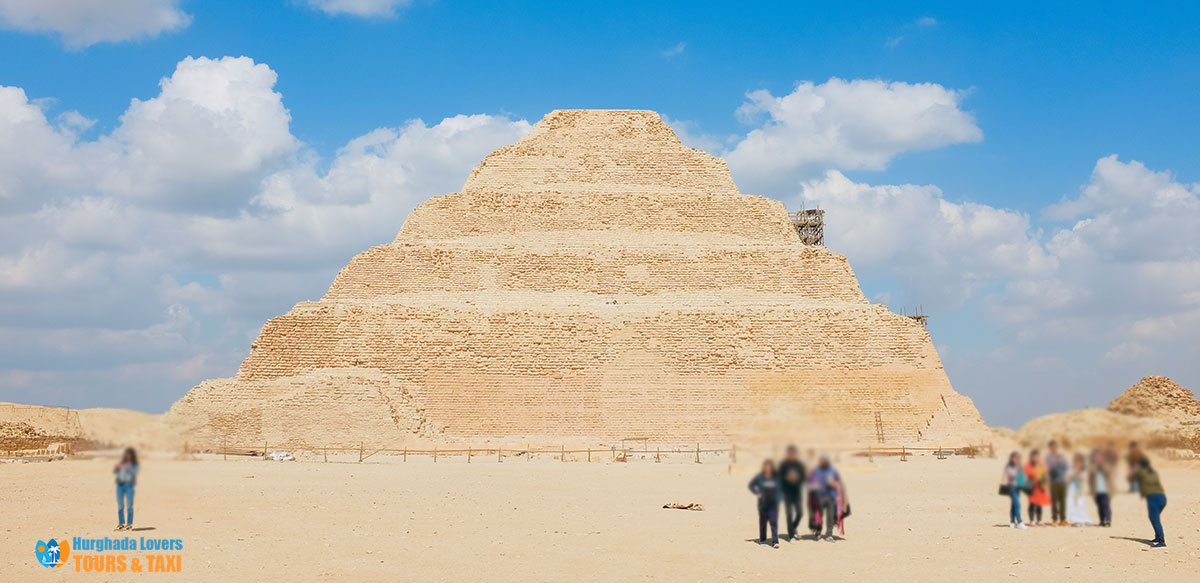Pyramid of Djoser in Sakkara Giza Egypt | Facts Egyptian Temples, History, Secrets Stages of the construction The Step Pyramid Complex of Djoser “Egypt’s First Pyramid” | Temple T | Ticket Prices.
The Step Pyramid of King Djoser – The history of the construction of the pyramid Listed the oldest Pharaonic Monuments & stone building in the history of Ancient Egypt in Sakkara Giza Cairo Sightseeing Tour.
History Of Egyptian and secrets about the stages of construction of the pyramid’s terraces and the complex that surrounds it by the architect Imhotep and the layout of the pyramid of the king Djeser “Egyptian Pharaohs kings” from the inside and its secrets contains on Pharaonic civilization & Things to Do in Egypt.
Hurghada lovers Offer Luxury Hurghada to Pyramids Tours | El Gouna to Pyramids Tours | Makadi bay to Pyramids Tours | Sahl Hasheesh to Pyramids Tours | Soma bay to Pyramids Tours .
Facts and secrets Pyramid of Djoser:
- The Step Pyramid was built starting with a single mastaba, then its construction was gradually completed until it reached 6 terraces stacked on top of each other with a successive geometric design.
- The pyramid was built with the idea of the eternal hill of the Pharaohs and the beliefs of the beginning of creation, where the king’s spirit ascends to the top of the pyramid “as a god or Lord of creation.” Then the spirit begins its ascent on the runway to the sky until it reaches the beginning of the sacred journey to the sun.
- Many basements and tunnels were built under the pyramid of King Djoser “Third Dynasty of Egypt“, more of which are being discovered every day by Egyptian and foreign archaeological missions.
- Funerary Mortuary Temples and Pharaonic shrines were built for the annual Pharaonic Festivals in Ancient Egypt, especially the Pharaonic Lord’s Day, which King Djoser celebrated after thirty years of his rule on the throne of ancient Egypt.
- Huge walls were built around Djoser’s pyramid group, decorated at the top with wonderful geometric shapes similar to those found in the Meccan dynasty Umm El Qa’ab Tombs in Abydos, which are located around the terraces of Saqqara.
Height: 62 m.
Base of the pyramid: 125 meters * 109meters.
Stone: Limestone
Architect: Imhotep
History of construction: In the 27th century BC.
Why is the pyramid of Djoser built?
- The main reason is the burial of King Djoser after his death.
- Royal tombs of king Djoser’s family.
When was the pyramid of Djoser built?
The pyramid was built during the reign of King Djoser of the 3rd dynasty
What is the idea of building the pyramid of Djoser?
It seems that Imhotep was inspired by the construction of the Zawara in the Mesopotamian Valley first, then invented his creative architectural work, proof that at first he built a cemetery in an exile consisting of six terraces on top of them, and the size of these above, taking its outer form the shape of the pyramid but resembling the Zawara.
It is believed that the way the terraces were built on top of each other to create the pyramid has remained the basis even in the Great Pyramids. Imhotep’s creativity was to replace raw bricks with stones in the construction of terraces, and this method was sufficient to preserve the pyramids over time, while most mud bricks or clay constructions disappeared over time.
How important is the pyramid of Djoser?
The Step Pyramid is the first large stone building in the history of Egyptian architecture and was attached to the Entrance Hall, the Royal Jubilee Temple, and the Funerary Temple.
The renovation and innovation are also reflected in the set of funerary buildings and temples attached to the pyramid.
Facts about the pyramid of Djoser:
- The pyramid was covered with a layer of polished white limestone during its construction.
- The pyramid is considered a stone building in the 27th century BC.
- The pyramid of Sakkara was hit by a powerful earthquake in 1992, much of the funerary complex fell from the pyramid.
- The Pyramid of Djoser is the oldest pyramid in the history of the Egyptian Pharaonic civilization and throughout history.
- The step pyramid is the beginning of the construction of architectural development in the civilization of ancient Egypt.
- The pyramid contains uniquely carved facades as well as balconies.
- 3330,400 cubic meters of stone and clay were used in the construction of pyramidal terraces.
- The pyramid contains a corridor 365 meters long.
- The pyramid of Djoser contains 400 underground rooms, including burial halls and fake rooms to prevent the mummy from being robbed by tomb robbers.
- The pyramid contains 40,000 pharaonic drawings on the wall of the long corridors inside the pyramid.
- There are 2 coffins that have been discovered containing a skeleton of a woman.
- The pyramid was covered with a layer of smooth coating of white limestone.
- 200,000 tons of stones were used to build terraces 5 and 6.
- The ancient Egyptians were the first to use stone cutting technology for the period 2650 BC.
Who is the architect of The Pyramid of Djoser?
The architect Imhotep is one of the general supervisors of the construction of the pyramid listed for King Djoser and the name Imhotep was found on the base of a statue of King Djoser, in addition to the Djoser group known for illustrating the art of construction in Pharaonic times using stone.
The Pyramid was built by the Egyptian architect, astronomer, priest, scribe, and ancient sage (Imhotep), who became a minister of King Djoser, whose name remained immortal through the ages in some late times and was considered by the Greeks as the god of medicine, science, and engineering.
What are the reasons to choose the construction site of the pyramid of Sakkara?
The area of Sakkara was close to the Pharaonic tombs of the Second Dynasty and the mastabas of the First Dynasty, and King Djoser chose the area as a necropolis to build his own tomb in the form of a great pyramid.
Who is the discoverer of the pyramid of Djoser?
- Von Miutoli was authorized by Mohammad Ali Pasha to carry the relics discovered in the listed pyramid in Germany, but Gottfried was completely submerged on the ocean floor because of a strong Hurricane.
- The entrance to the pyramid of Djoser was discovered in 1821 by the German Consul General Heinrich von Miutoli and the Italian engineer Gerolano Segato.
- The remains of a pharaonic mummy have been found, including a skull and two heels covered with pure gold.
- Chambers, corridors, and a collection of pharaonic mummies were discovered in the pyramid in 1837 AD, thanks to the excavation mission of archaeological researcher John Bering.
- Excavations inside the pyramid began with Cecil Firth in 1926, James Cable then Jean Philippe Lauer until 1934 AD.
- The fence surrounding the pyramid was restored in the courtyard of the step pyramid under the direction of archaeologist Jean Philippe Lauer.
- A collection of tunnels under the pyramid was discovered by a mission from Lithuania in 2001.
Pyramid track layout:
The base of the step pyramid is rectangular with 6 terraces and has an exterior façade containing vertical cavities, inside you will find inscriptions, drawings and columns connected to each other and contain anchored openings as well as columns with crowns in the shape of an open lotus flower, you will also find inscriptions on the wall in a horizontal line.
Stages of the construction of the step pyramid:
The Pyramid of Djoser was built in 6 stages, where the first phase was built by the first terrace, then 5 more steps to build each terrace separately, until it finally became a pyramid of 6 terraces.
Phase 1:
The first terrace was built of limestone and then an outer cover of limestone.
A vestibule was built in the burial chamber of King Djoser.
Length of the terrace: 63 m
Height: 8 m
Phase 2:
The second terrace is built and has 11 balconies heading east.
Length of the side: 72 m
Height: 7 m
Step 3:
The third terrace was built to cover the corridors and corridors of the eastern part of the pyramid.
Length of the side: 80 m
Height: 5 meters.
Step 4:
A pyramid of 3 degrees was built on one on the other, with a length of 86 meters * 77 meters.
The stones were added at an angle of 17 degrees to cover the body of the main pyramid with the connection between them to appear strongly coherent.
Step 5:
The pyramid was covered with a base of 119 meters * 107 meters, an entrance was built in the north direction and a surface funerary temple was built next to it, in addition to covering the main entrance of the Step Pyramid.
Step 6:
The pyramid was enlarged to become the length of the side 121 × 109 meters with 6 terraces at a height of 63 meters, with an architectural design so that the exterior of the pyramid is level after the addition of the tribunes in a vaulted way.
Pyramid infrastructure listed:
- It contains the compartment of the king’s coffin, the entrance and the rooms covered with earthenware, as well as 11 vestibules with underground corridors and a set of wells.
- The King’s Burial Chamber consists of an underground red granit stone 28 meters deep in size 7 * 7 meters, you will see a room directing you to the King’s burial hall through a 1 meter hole.
- The main entrance was closed with a large block of granit stone weighing about 4 tons, the walls of the burial chamber and the king’s room were decorated with stones and then a layer of sand.
- A set of corridors connected to a set of vestibules was built around the burial chamber of King Djoser, and after crossing the east vestibule, you will see 4 rooms covered with blue earthenware and curtain-shaped panels.
- The blue earthenware of the ancient Egyptians means water in the other world after death, as it was in the beliefs in the Egyptian religion of the pharaohs.
- You will see 3 inscriptions on the walls of Djoser’s pyramid during the official jubilee day celebrations (Heb Sed).
- You will see that King Djoser’s burial chamber is wrapped in four layers of red granit stone.
- A statue of the king was found in the burial chamber as well as a mummy and the coffin of King Djoser.
- You will notice the pyramid of King Djoser surrounded by cult gums and a set of underground vestibules connected to each other under 27 meters.
Pyramid and complex of Djoser in Sakkara:
The Djoser complex is one of the largest complexes inEgypt, containing buildings for official ceremonies and festivals as well as funerary temples to worship ancient Egyptian religious beliefs.
- Pyramid
- South Cemetery
- Jubilee Niches(Heb Sed)
- Temple T
- South open court.
- Chapel of the South
- Chapelle of the North
Funeral temple
- West arcades
- Colonnade
- North Square
- Northern Warehouses
- Arcades of the North
- Basement
- North Altar
The Great Trench:
A trench 40 meters wide and 750 meters long was built around the pyramid of King Djoser, and the trench is currently completely covered with sand.
You will notice the pyramid of King Usser-Ka-Ef and the pyramid of King Onas on the sides of the trench surrounding the step pyramid.
The Wall:
- A large wall was built around the complex of the pyramid of King Djoser 1,645 meters long, 11 meters high in limestone, 14 gates built inside the wall and a main entrance was built from the southeast direction.
- The complex was built on an area of about 30 acres, 545 meters long and 278 meters wide.
- A stone gate and tower were built every 4 meters.
Main entrance:
- The main entrance to the complex was built from an entrance door and a column hall consisting of 20 pairs of stone columns 6 meters high.
- You will see the design of the columns in the form of longitudinal plant stems where they represent niches, then in the west direction we find that the south square contains 4 columns and found remains of the statue of King Djoser in addition to a collection of papyrus containing texts confirming that the architect Imhotep was the one who designed and supervised the construction of the pyramid and the complex that surrounds it completely.
- Archaeologist Jean Philippe Lauer remodeled the interior of the entrance between 1946 and 1956.
The southern cemetery of the Djoser complex:
The limestone tomb was built rectangular and made of red granite stone with a special niche Djoser for worship and sculptures of cobras’ heads at the entrances and roofs of the cemetery.
There is an entrance to the cemetery that directs you to the burial on the same manoeuvering room in the step pyramid, then a corridor to a gallery decorated with blue earthenware on the walls and drawings of King on the false doors while celebrating the day of Heb Sed.
So far, it has not been determined why the south cemetery was built in the complex, is it a fake cemetery. Is it a rescue cemetery? Is it a miniature cemetery for King Djoser? Was it really used for burial? The place of the jubilee festival celebrational chamber about 2 meters long and contains a manoeuvering room in the shape of the letter T.
(Heb Sed):
- The official ceremony took place in the courtyard with the presence of King Djoser on the jubilee day.
- The square is designed in a square with 13 niches dedicated to worship.
- The niche is designed to signify the shadow of God so that the ceiling is flat, and the figure appears arched like palm branches, in addition to another plan with a vaulted ceiling, columns on the walls and false doors to deceive tomb robbers.
- You will see 12 niches in the east direction, built for the celebrations of King Djeser in the other life after his death.
Temple T:
The temple was discovered by the archaeologist Jean Philippe Lauer, the temple was built of polished stone.
The temple is a small hall with columns in the entrance and contains a front room, a square room, 3 interiors and a limestone ceiling based on columns.
The Funerary Temple:
Built of white limestone to sanctify King Djoser in the northern direction of the pyramid, the temple consisted of a wooden gate, two columns, several interior rooms, and a courtyard in the west direction with a secret staircase leading to the pyramid from the inside and another courtyard in the east direction.
Remains of statues of King Djoser were found next to the funerary temple.
Basement:
The secret basement consists of a polished stone room at a 17° angle.
Inside the basement is a life-size limestone statue of Djeser sitting on the throne.
Southern Chapel:
There are currently only remains of the chapelle and the entrance, which were designed with a roof based on columns, so that each row contains 4 columns and is colored in red and black like cedars.
In the chapel you will find a niche of worship in addition to Pharaonic drawings and inscriptions, papyri and manuscripts of the New Kingdom of ancient Egypt.
Northern Chapel:
It has a small courtyard with a well for a large underground hall.
West arcades in the complex of Djoser:
The three arcades were built from the remains of the stones of the step pyramid.
Under the corridors there are 400 rooms, which were used as warehouses and graves, some of which were fictitious to deceive cemetery thieves.
Pyramid of Djoser
It is the step pyramid of King Djeser in Sakkara, built by the Egyptian architect, astronomer, priest, writer and ancient sage (Imhotep), who became a minister of King Djeser and whose name has remained immortal through the ages and even a deified in some late times and was considered by the Greeks as the god of medicine, science and engineering.
Imhotep seems to have been inspired by the construction of the Ziggurats in the Mesopotamian Valley first, and then invented his creative architectural work, as evidenced by the fact that at first he built a cemetery in the desert consisting of six terraces on top of each other, and the size of the above, taking its outer form like a pyramid but resembling a Ziggurat. It is believed that the way the terraces are built on top of each other to create the pyramids has remained the basis even in the Great Pyramids.
Imhotep’s creativity was to replace bricks with stones in the construction of mastabas, which was enough to preserve the pyramids over time, while most monuments built of raw brick did not hold with the ages.
The Step Pyramid is the first large stone building in the history of Egyptian architecture and was attached to the Entrance Hall, the Royal Jubilee Temple and the Funerary Temple.
Innovation and creativity are also reflected in the collection of funerary buildings and temples attached to the pyramid;
The pyramid is surrounded by a fence with a perimeter of more than a mile and a height of more than 10 meters.
Buried pyramid or (unfinished armor):
The pyramid of (Sekhemkhet) of the third dynasty in Sakkara, a pyramid built in the time of Pharaoh Sekhemkhet and whose height is 30 meters, and in its inner chamber appeared in the door of the hall of arches that are the first of their kind in Egyptian architecture in history.
The one-degree pyramid (Khaba, Hodgeva) has Zawyet El-Erian:
Built in the time of King Khaba and apparently built from its inception as a step pyramid, but unfinished, its only interior room is empty and accessible via a canal
The address of The Pyramid of Djoser:
The Necropolis of Sakkara, Giza, Egypt.
Visit dates for The Pyramid of Djoser:
Open Every Day From 08:00 AM To 19:00 PM
Ticket prices for the Pyramid of Djoser:
Entrance ticket price for foreign tourist = 200 Egyptian pounds
Entrance ticket price for foreign students = 100 Egyptian pounds
Entrance ticket price for Egyptians = 20 Egyptian pounds
Egyptian student entrance ticket price = 10 Egyptian pounds
Author & Writer: Tamer Ahmed Abd elfatah Yousif | Tourism Expert | Best Tour Operator in Hurghada
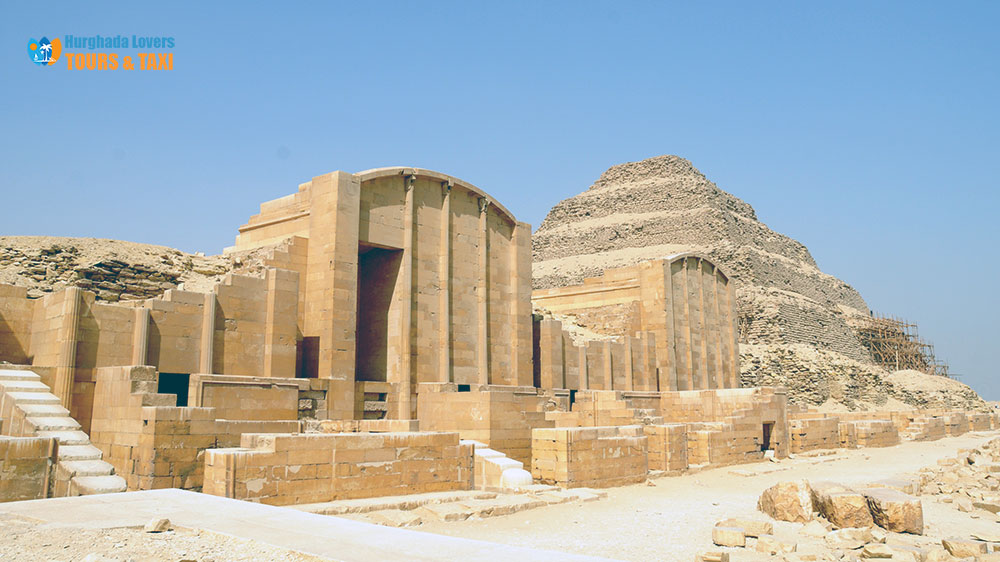
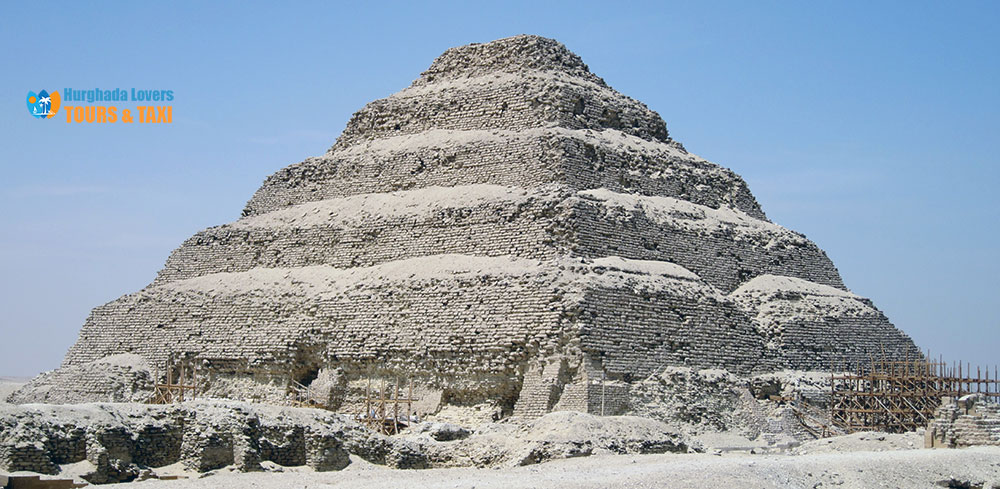
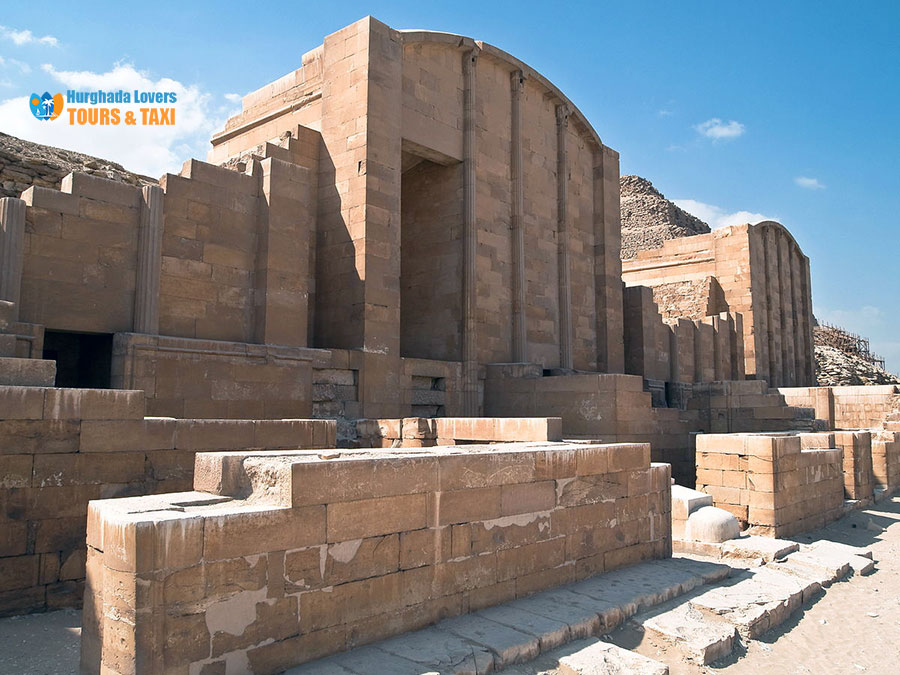
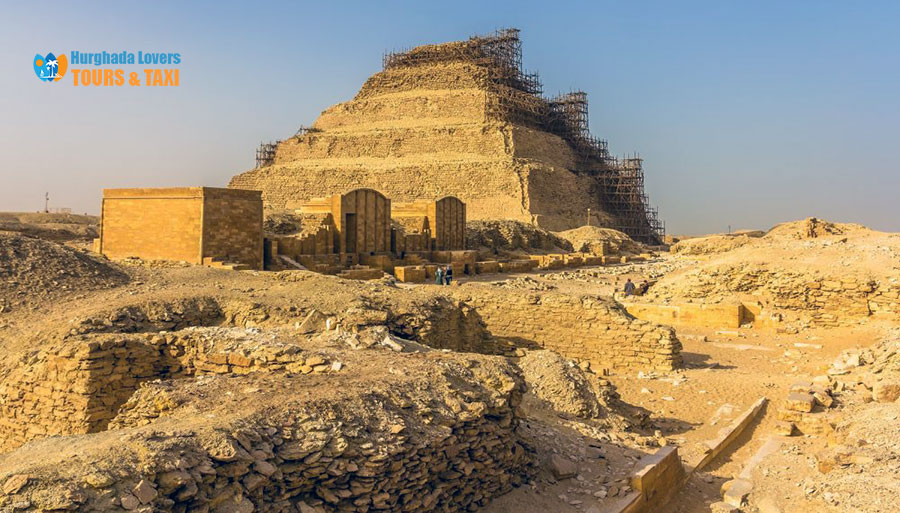
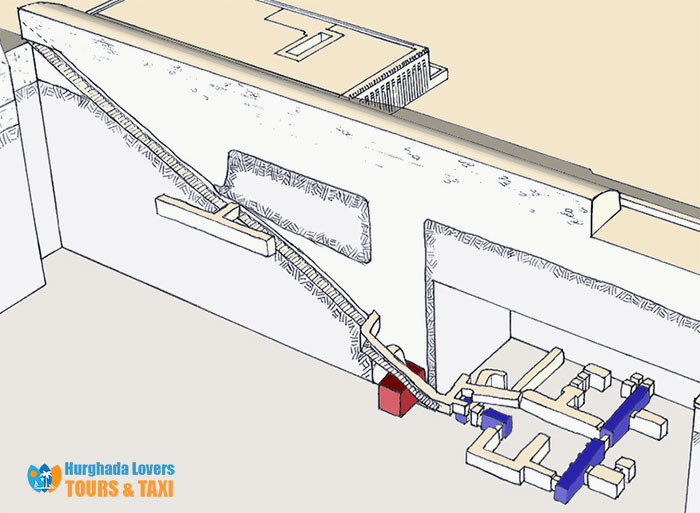
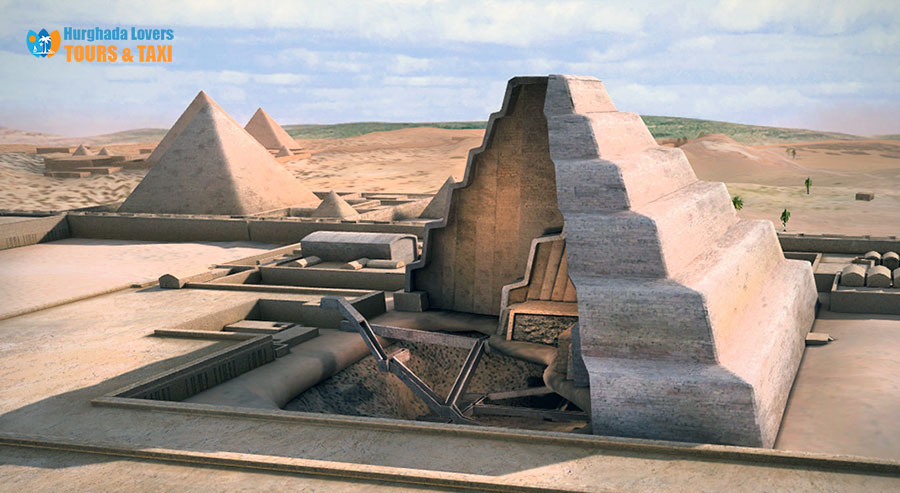
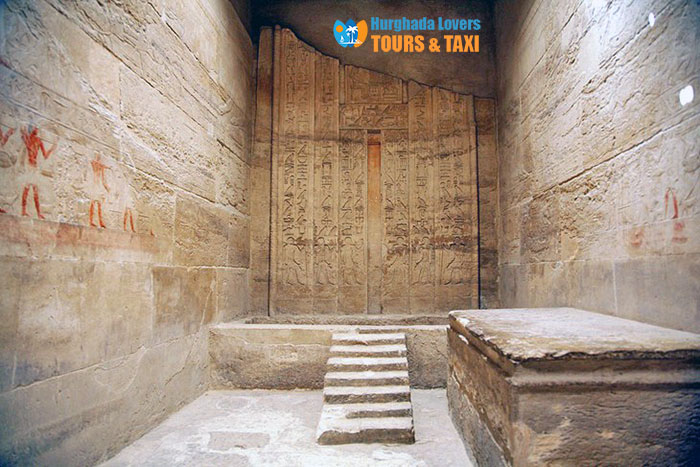
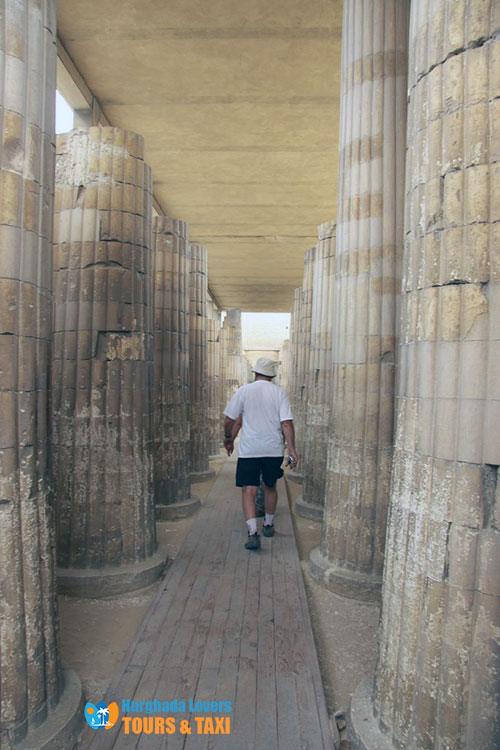



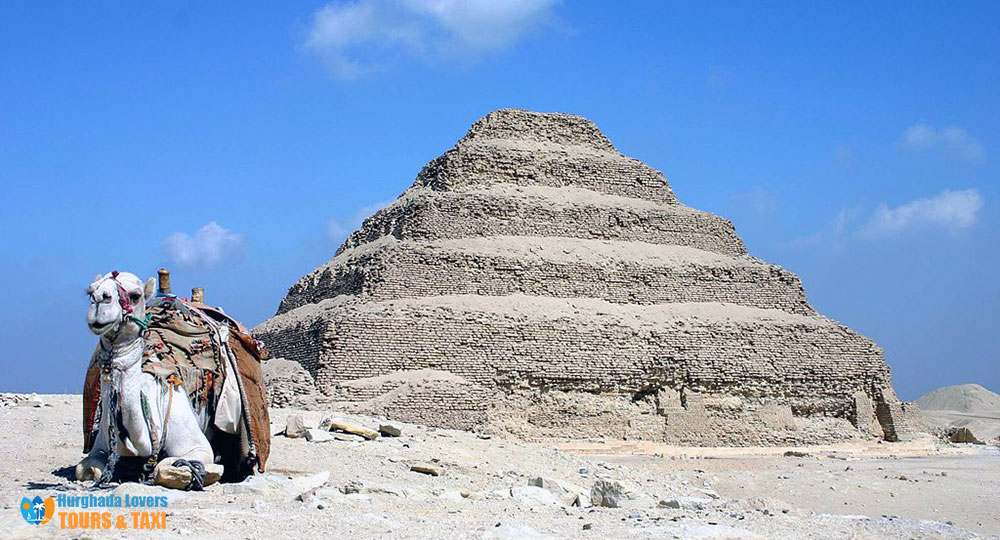
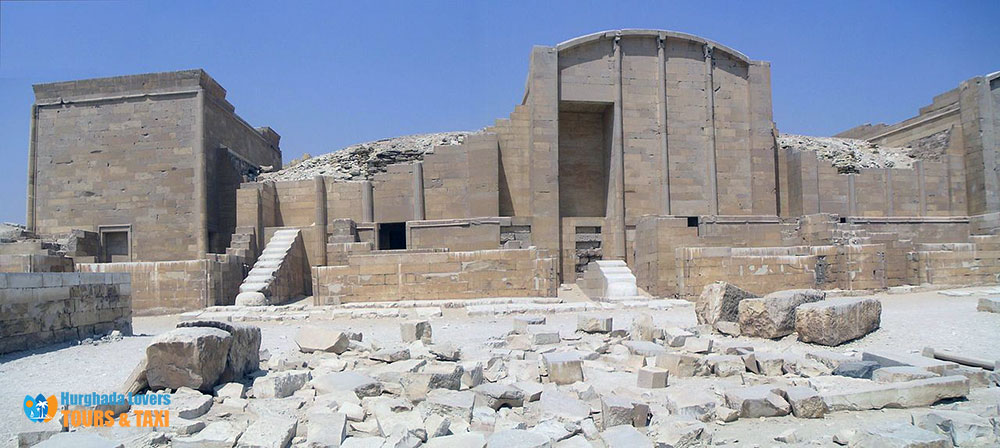

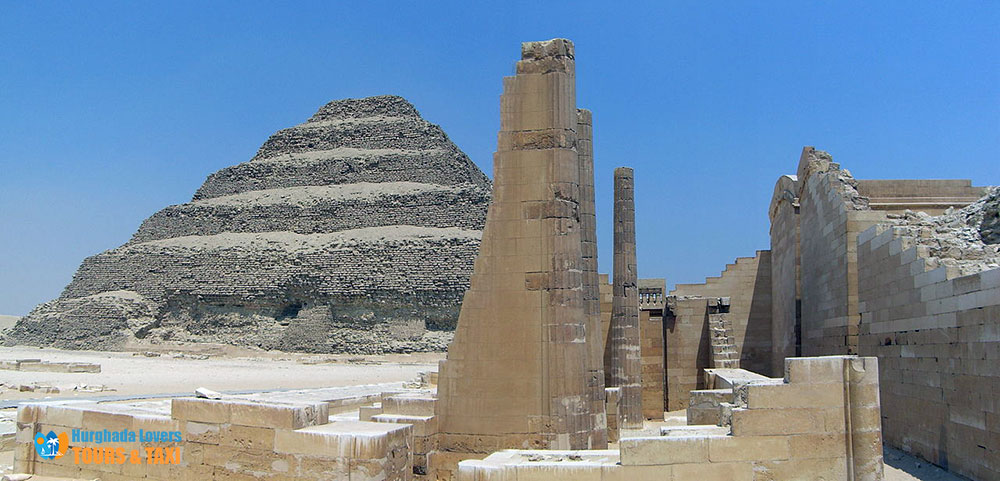

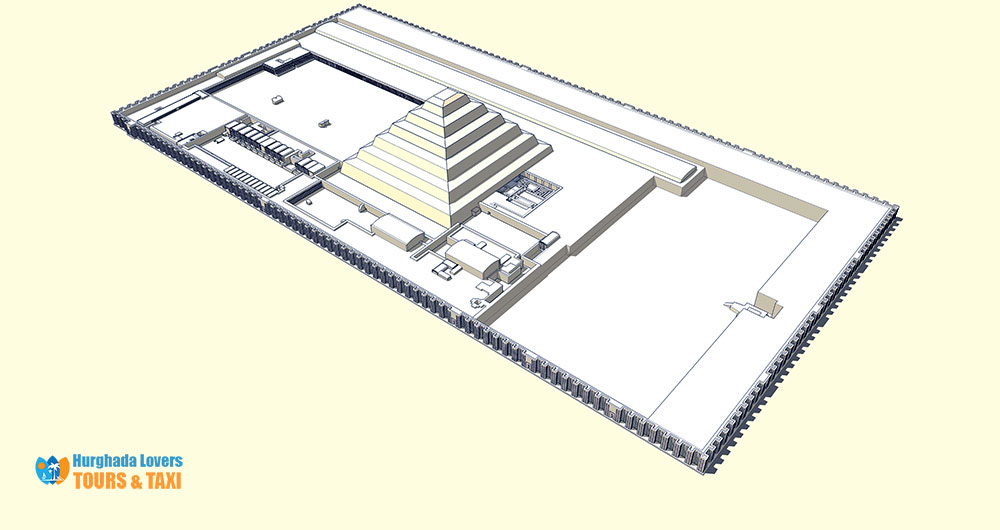
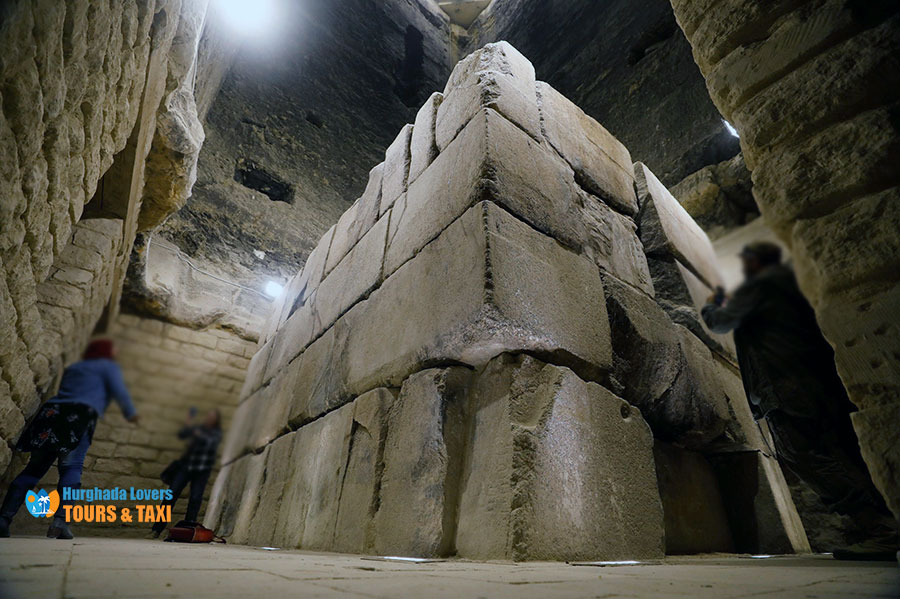
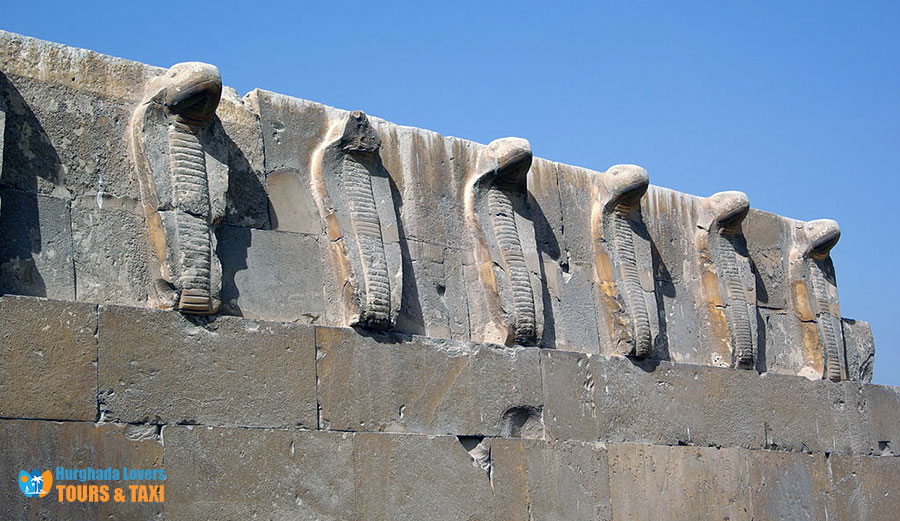
Pyramid of Djoser in Sakkara Giza Egypt | Step Pyramid of King Djoser

